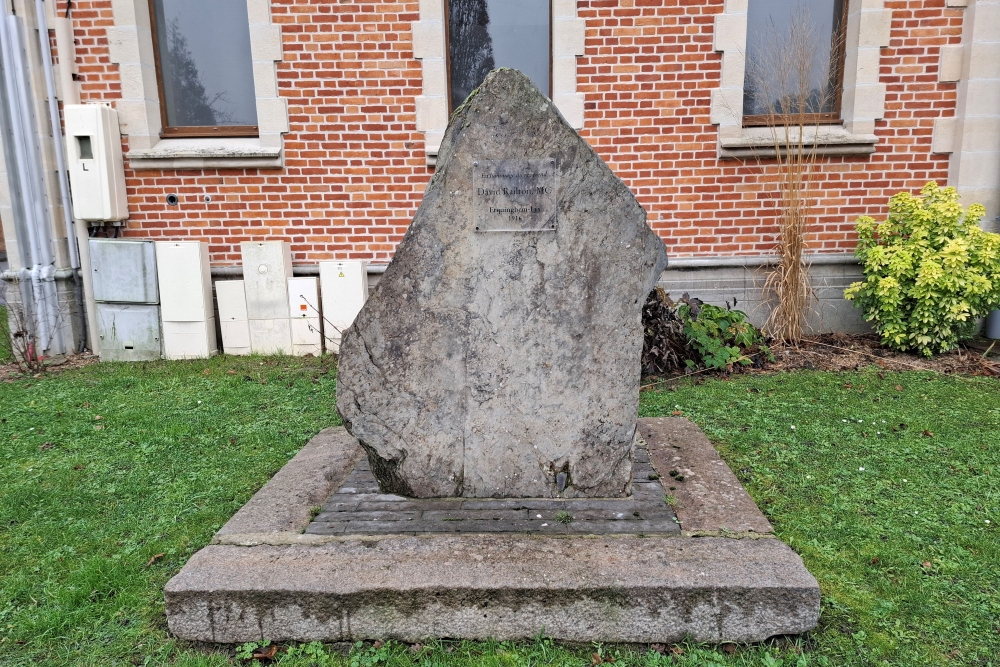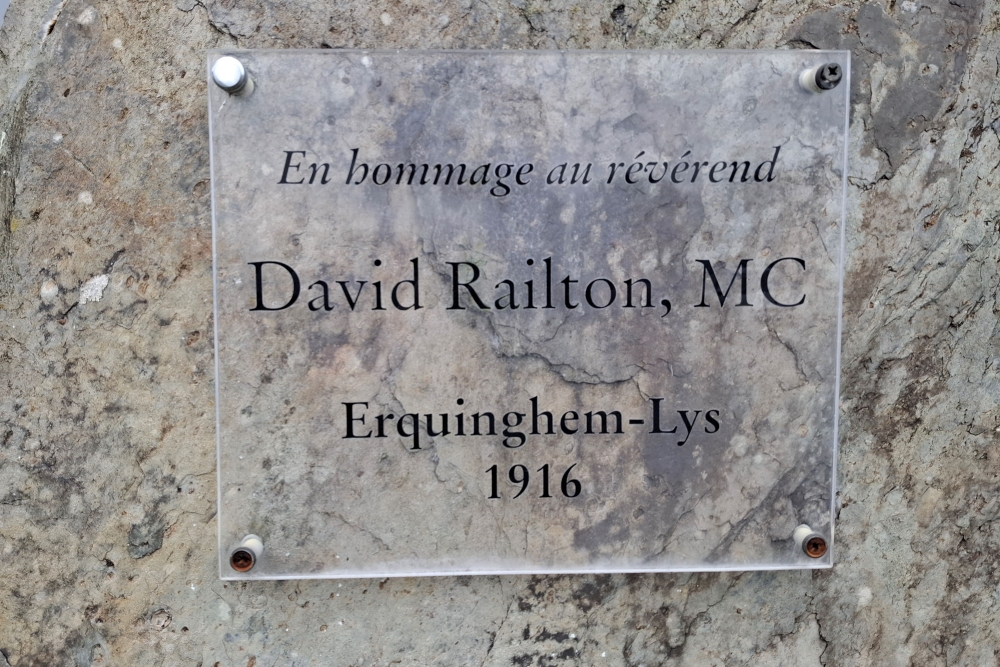Memorial Reverend David Railton
This memorial commemorates Reverend David Railton, British chaplain. He was at Erquinghem-Lys in July 1916 with his unit, the 18th battalion of the Northumberland Fusiliers. When he returned from the front where he had gone to bury the remains of a comrade, he saw a grave containing a crude white wooden cross with the inscription engraved in black letters: ‘An unknown soldier’. The idea occurred to him that the body of a British soldier, unknown by name and rank, should be brought back from France to Britain to rest among the country's most illustrious men.
After the war, David Railton was appointed vicar in Margate, Kent UK. In August 1920, he wrote to the Dean of Westminster, Bishop Herbert Ryle, an introduction to his idea that he always had in mind. This idea gained ground and on 19 October 1920 it was finally accepted. The selection of the unknown British soldier was made in Saint-Pol-sur-Ternoise (Pas-de-Calais), on the night of 7-8 November 1920, by Brigadier General L.J. Wyatt, randomly among four exhumed and unidentified bodies from the battlefields of the Western Front (Aisne, Somme, Arras and Ypres).
The next day, 9 November, the coffin with the body was taken under escort to Boulogne-sur-Mer (Pas-de-Calais) and placed in a chapel of the castle, where it was guarded by French ‘Poilus’-holders of the Legion of Honour. On 10 November, a detachment of the 6th Hunters from Lille escorted the anonymous soldier from the castle to the port and, after a speech by Marshal Foch, the corps left Boulogne-sur-Mer on the destroyer ‘HMS Verdun’ to disembark at Dover. It was then transported by rail to Victoria Station in London.
The remains of the unknown British soldier were buried in the alcove of Westminster Abbey on 11 November 1920 at 11am, the anniversary of the Armistice.
Source: Information panel memorial stone
Do you have more information about this location? Inform us!
Source
- Text: TracesOfWar & Samuël Van Eetvelde & Joni Machtelinckx
- Photos: Samuël Van Eetvelde & Joni Machtelinckx
Nearby
Museum
- Plugstreet 14-18 Experience - Ploegsteert (Comines-Warneton)
- Museum of the Battle of Fromelles - Fromelles
- Tourist Information Point Mesen - Mesen
Point of interest
- Farm Fleurbaix - Fleurbaix
- Mines War "Birdcage" - Comines-Warneton
- Billeting Stay Adolf Hitler - Fromelles
Monument
- War Memorial Erquinghem-Lys - Erquinghem-Lys
- War Memorial Armentières - Armentières
- War Memorial Nieppe - Nieppe
Cemetery
- Commonwealth War Graves Erquinghem-Lys Extension - Erquinghem-Lys
- Commonwealth War Cemetery Suffolk (La Rolanderie Farm) - Erquinghem-Lys
- Commonwealth War Cemetery Cite Bonjean - Armentières





